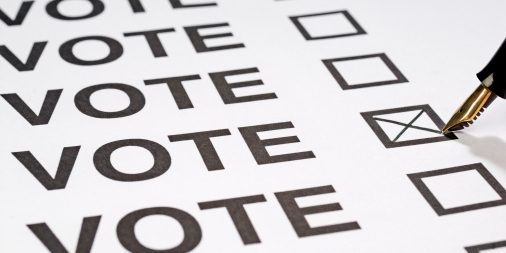Three states voted for presidential and gubernatorial candidates of different parties this year, while at least two voted for presidential candidates of a different party than the state’s trifecta status.
A state government trifecta occurs when one party holds a state’s governorship and majorities in both chambers of the state legislature. Heading into the 2020 elections, Republicans held 21 state government trifectas and Democrats held 15. The 14 remaining states had divided government, where neither party holds a trifecta. Republicans gained at least two trifectas in states with divided governments this year, picking up trifectas in Montana and New Hampshire. As of Nov. 16, Alaska’s final trifecta status remained too close to call, leaving the possibility of a third trifecta pickup for Republicans. No other states’ trifecta statuses changed as a result of the election.
Joe Biden (D) won all 15 states with Democratic trifectas as well as Arizona, which has a Republican trifecta, and New Hampshire, which gained one. As of Nov. 16, the results of the presidential election in Georgia, a Republican trifecta, remained too close to call. Four of the five outlets Ballotpedia tracks had called the state for Joe Biden.
Donald Trump (R) won the other 20 Republican trifecta states. Of the 12 states with divided government after the election (including Alaska), five voted for Donald Trump and seven for Joe Biden.
Eleven states elected a governor this year, including seven with Republican governors at the time of the election and four with Democratic governors. Three states split their presidential and gubernatorial votes. New Hampshire and Vermont re-elected the Republican governors first elected in 2016 while voting for Joe Biden for president. North Carolina re-elected the Democratic governor first elected in 2016, while voting a second time for Donald Trump.
All 11 states also held gubernatorial elections in 2016. That year, five states split their presidential and gubernatorial votes. Montana, North Carolina, and West Virginia elected Democratic governors while also voting for Donald Trump (R). New Hampshire and Vermont elected Republican governors while also voting for Hillary Clinton (D).
Both Montana and West Virginia voted for Donald Trump a second time while also electing a Republican as governor. In Montana, Greg Gianforte (R) was elected governor after losing to incumbent Steve Bullock (D) in the 2016 election. In West Virginia, Jim Justice (R) was re-elected. Justice was first elected as a Democrat in 2016 and joined the Republican Party the following year.


